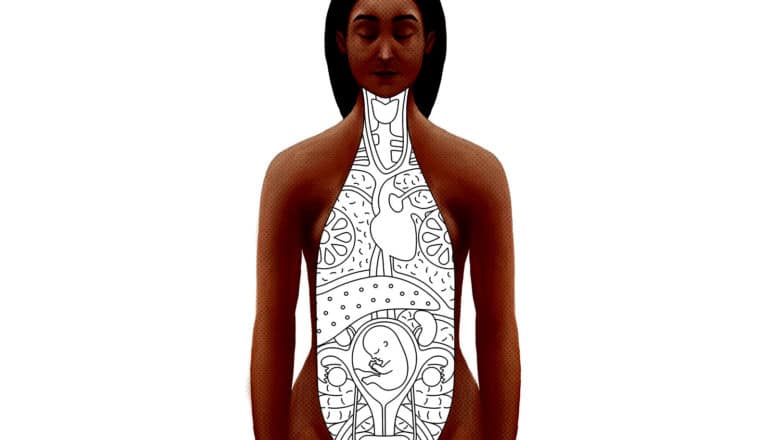
Sex education lacks representation of Black and Brown people, research finds.
In recent years, attention to diversity of images in visual media—TV, movies, stock photos, children’s books, and more—has increased.
The new paper investigates skin color and skin tone diversity in anatomical diagrams within contemporary human sexuality textbooks. Their findings appear in the Journal of Sex & Marital Therapy.
The research team found that only 1.1% of diagrams represented dark skin tones, while 83.5% represented light skin tones. Their findings are based on analysis of skin tone and skin color diversity in 182 anatomical diagrams and images from eight contemporary, college-level human sexuality textbooks.
“Our findings demonstrate a pattern of staggeringly uneven representation of darker skin tones in comparison to lighter skin tones,” says Deana Williams, a doctoral student in the Center for Sexual Health Promotion at the Indiana University School of Public Health-Bloomington.
“And in some images where skin colors commonly associated with Black and Brown people were presented, the hues were noticeably washed out or lightened with white shading.”
“Sex research and education materials—including human sexuality textbooks—rarely reflect racial or skin tone diversity and inclusion in their anatomical imagery,” says Yael R. Rosenstock Gonzalez, also a doctoral student at the Center for Sexual Health Promotion.
The most frequent skin color coded was white with pink undertones, which comprised 42.3% of the anatomical images. The second most prevalent color was pinkish brown, at 29.1%.
While skin color and skin tone alone are not necessarily definitive indicators of race, they are what we use to quickly categorize individuals, the researchers say. Depicting light skin tones as normative perpetuates not only racism but also colorism, which privileges light skin over dark skin.
“Racism and colorism perpetuate body ideals that have implications for self-esteem, disordered eating, and mental health and well-being, as well as sexual and reproductive health,” says Debby Herbenick, the center’s director and a professor. “Our findings demonstrate the perpetuation of colorism within sexuality education, and how colorism becomes part of institutional structures and systems of formal education.”
The researchers note that such skin color bias has a negative impact on the health outcomes of people with dark skin tones, who may avoid or delay sexuality education opportunities or clinical care if they do not see themselves represented in recommended resources, thereby endangering their sexual and reproductive health.
“Sexuality authors and educators as well as sexuality textbook editors and publishers need to recognize the ways that white supremacy culture affects sexuality education materials and reevaluate how we can create richer, more holistic representations,” Rosenstock Gonzalez says.
The university’s Racial Justice Research Fund supported the work.
Source: Indiana University
The post Sex ed diagrams in books don’t show darker skin appeared first on Futurity.
from Futurity https://ift.tt/3tF1020
No comments:
Post a Comment